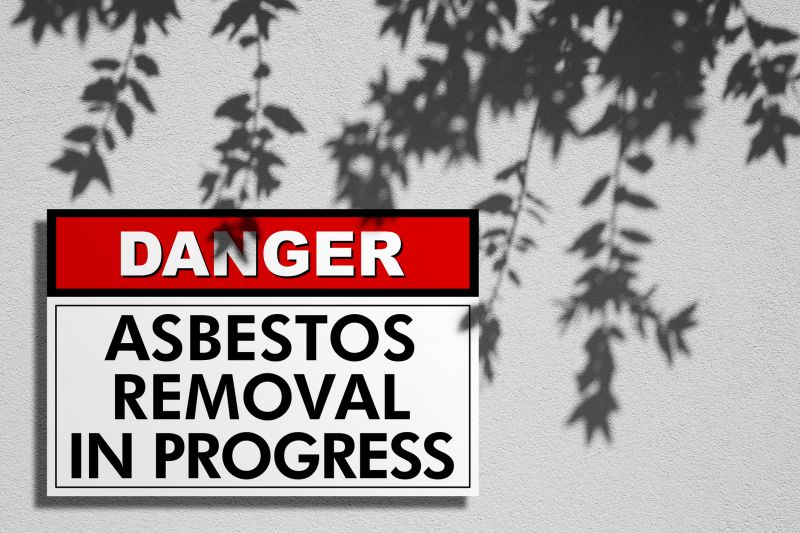Top-Rated Products for Asbestos Removal Projects
Browse a curated list of high-quality products designed to simplify asbestos abatement and ensure safety during removal.
 Removing asbestos requires careful planning and the right selection of specialized products to ensure safety and effectiveness. Asbestos fibers, when disturbed, can become airborne and pose health risks, making it essential to use appropriate protective gear and removal tools. Proper containment materials help prevent the spread of asbestos dust during removal processes, while specialized vacuums and disposal containers facilitate safe handling and disposal. It is important to understand the different types of asbestos-containing materials to choose suitable removal products tailored to specific situations. Whether dealing with insulation, roofing, or flooring, selecting the right tools and protective equipment is crucial for minimizing exposure and ensuring compliance with safety regulations.
Removing asbestos requires careful planning and the right selection of specialized products to ensure safety and effectiveness. Asbestos fibers, when disturbed, can become airborne and pose health risks, making it essential to use appropriate protective gear and removal tools. Proper containment materials help prevent the spread of asbestos dust during removal processes, while specialized vacuums and disposal containers facilitate safe handling and disposal. It is important to understand the different types of asbestos-containing materials to choose suitable removal products tailored to specific situations. Whether dealing with insulation, roofing, or flooring, selecting the right tools and protective equipment is crucial for minimizing exposure and ensuring compliance with safety regulations.
Top Overall Option
Comprehensive Asbestos Removal Kit
A complete asbestos removal kit typically includes protective gear, containment materials, HEPA vacuums, and disposal bags, providing a comprehensive solution for small to medium removal projects. These kits are designed to meet safety standards and simplify the process by offering all necessary components in one package. They are suitable for DIY enthusiasts with proper training or professional contractors seeking reliable equipment for asbestos abatement. Using a well-rounded kit can help ensure that all aspects of removal are addressed safely and efficiently, reducing the risk of fiber release during the process.
Types of Products For Asbestos Removals
Containment Barriers
Materials used to seal off work areas and prevent asbestos fibers from spreading during removal.
HEPA Vacuum Cleaners
High-efficiency particulate air (HEPA) vacuums designed to capture asbestos fibers during cleanup.
Protective Coveralls
Disposable or reusable coveralls that protect skin and clothing from asbestos fibers.
Respirators
Respiratory masks equipped with HEPA filters to safeguard against inhaling asbestos fibers.
Disposal Bags
Heavy-duty, labeled disposal bags designed specifically for asbestos waste containment.
Sealing Tape
Specialized tape used to seal containment areas and disposal bags securely.
Protective Gloves
Disposable gloves made from materials that prevent fiber transfer and skin contact.
Scraping Tools
Tools designed for safely removing asbestos-containing materials from surfaces.
Encapsulation Products
Sealants used to encapsulate asbestos materials that cannot be removed immediately.
Air Quality Monitors
Devices that measure airborne asbestos fiber levels to ensure safety during removal.
Disposable Shoe Covers
Footwear covers that prevent tracking asbestos fibers outside the work area.
Dust Suppressants
Sprays or foams used to minimize dust during removal activities.
Labeling and Signage
Signs and labels to clearly mark asbestos work zones and waste containers.
Decontamination Units
Portable stations that facilitate safe removal and cleanup of asbestos fibers from personnel and equipment.
Popular Choices
Widely used for cleaning asbestos residues with high filtration efficiency.
Commonly chosen for protection during asbestos removal projects.
Popular for personal protective equipment to prevent inhalation of fibers.
Frequently used to isolate work areas and contain asbestos dust.
Essential for safe disposal of asbestos waste, often chosen for their durability.
Commonly used to secure containment and disposal areas effectively.
Popular for ensuring skin protection during handling and removal.
Trending for real-time measurement of airborne asbestos fibers.
Often used to reduce dust during removal activities.
In demand for thorough personnel decontamination after asbestos work.
Popular for removing asbestos-containing materials from surfaces safely.
Chosen for sealing asbestos materials that cannot be removed immediately.
Commonly used for safety communication and hazard marking.
Frequently used to prevent fiber spread outside work zones.
Effective asbestos removal often involves a combination of products designed for different stages of the process. Initial containment kits help seal off affected areas, while HEPA-filtered vacuums are used to clean residual fibers. Personal protective equipment such as respirators, coveralls, and gloves provide essential safeguards for workers. Disposal bags and labeled containers ensure that asbestos waste is handled responsibly and in accordance with legal requirements. When planning an asbestos removal project, it is vital to assess the scope of work, the type of asbestos material involved, and the appropriate products to use at each step. Investing in high-quality, certified removal products can help streamline the process and reduce health risks associated with asbestos exposure.
Key Buying Considerations
- Certification and safety standards compliance of products
- Compatibility of protective gear with other equipment
- Type and condition of asbestos material involved
- Size and scope of the removal project
- Ease of use and ergonomic design of tools
- Durability and quality of containment materials
- Effectiveness of filtration systems in vacuums
- Disposal requirements and waste handling regulations
- Availability of replacement parts and consumables
- Cost and budget constraints for the project
- Training requirements for proper product usage
- Compatibility with existing safety protocols
- Ease of sealing and securing containment areas
- Monitoring and measurement capabilities for airborne fibers
- Availability of comprehensive kits versus individual products
